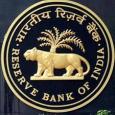This column, provided here to illustrate Mr. Tarapore's sharp focus on the common person and his depth of understanding of the core issues at hand, was written ahead of the monetary policy announcement of January 2012. It was released then as part of Mr. Tarapore's multi language syndicate service.
The Governor of the Reserve Bank of India (RBI), Dr. D.Subbarao set out the contours of the monetary policy on January 24, 2012.To the Common Person, monetary policy appears incomprehensible, but it is important that we have some broad idea of how it impinges on our day-to-day life.
Now what are the concerns of monetary policy? In a number of countries the primary objective of monetary policy is to contain inflation and central banks are given instrument independence to control inflation. In a number of other countries, including India, there are multiple objectives. The difficulty with such a wide mandate is that there are too many objectives and too few instruments. For instance, in India, the RBI has to be concerned not only about control of inflation but growth of the economy the financing of the government, the provision of adequate credit to the commercial sector and the country’s balance of payments with the rest of the world. The RBI is closely associated with the government’s borrowing programme and the management of the country’s foreign exchange reserves as also the exchange rate of the rupee. Although the RBI has onerous duties, it has little or no independence. It may appear cynical to say that the independence of the RBI is a mere fig leaf which is used conveniently to the advantage of the government. While the government nominally claims that the RBI has total independence, in practice the government reins in the RBI.
Now what are the concerns of monetary policy? In a number of countries the primary objective of monetary policy is to contain inflation and central banks are given instrument independence to control inflation. In a number of other countries, including India, there are multiple objectives.
The government expects the RBI to be concerned about the growth of the economy and restrains the RBI from taking corrective measures to prevent unsustainable growth; once unsustainable growth results in inflation, it becomes the primary task of the RBI to control inflation and it is expected to do so without adversely affecting growth- an impossible juggler’s act.
The RBI has a number of concerns. First, although inflation has come down from around 9.5 per cent to 7.5 per cent as at the end of December 2011; this is largely because of the decline of food inflation. Top government analysts have cautioned that there could soon be a resurgence in food inflation. Moreover, manufacturing inflation has not shown a decline.
Secondly, the government expects the RBI to stimulate growth. The government, itself, is not in a position to provide a stimulus as the budget deficit is already too high. The government needs to increase its borrowing programme by Rs 93,000 crore over the budgeted figure. The only way the additional borrowing can be put through is by the RBI purchasing the older securities to make space for the new securities (about Rs 70,000 crore of securities have already been bought by the RBI in the current financial year).
Thirdly, the inflows by way of Foreign Institutional Investment ( FII) has come down in the current financial year and the RBI has had to provide incentives for larger flow of non-resident deposits and also increased External Commercial Borrowing ( ECB) by the corporate sector. The balance of payments current account deficit (CAD), which is already large, is now coming under even greater pressure.
Fourthly, the RBI has had to ensure the adequate flow of credit to the commercial sector.
It is against this background that the RBI had to formulate its January 24, 2012 measures. What the RBI has done is to release cash balances of banks which are impounded by the RBI under the cash reserve ratio (CRR). Accordingly, the CRR has been brought down from 6 per cent to 5.5 per cent of liabilities, thereby releasing Rs 32,000 crore; this will enable banks to undertake multiple credit creation. The reduction of the CRR is a powerful signal for easing of monetary policy.
The government expects the RBI to be concerned about the growth of the economy and restrains the RBI from taking corrective measures to prevent unsustainable growth; once unsustainable growth results in inflation, it becomes the primary task of the RBI to control inflation and it is expected to do so without adversely affecting growth- an impossible juggler’s act.
The RBI has kept unchanged the 8.5 per cent repo rate (i.e. the rate at which RBI provides short-term accommodation, generally overnight, against government securities, and such accommodation has been as large as Rs 120,000 crore. For a repo rate to be effective it should be at least higher than the one-year deposit rate which is over 9.0 per cent. Hence, the present repo rate is too low. While the RBI is reluctant to reduce the repo rate it has opted to use a more powerful instrument by reducing the CRR. The reduction of the CRR will eventually feed into lower deposit and lending interest rates.
As between deposit and lending rates, banks are likely to first reduce deposit rates. Accordingly, depositors would do well to quickly lock in their savings into relatively longer-term deposits of say up to 3 years. They should go in for the 3 year deposits even if the one year deposit rate is slightly higher than the 3-year rate. There are now clear signals that deposit rates will come down in the ensuing period.
To the extent borrowers are able to wait, they should defer their borrowing as lending rates are bound to come down.
There could, perhaps have been a better way of injecting liquidity in the system. The recent depreciation of the rupee from US$ 1= Rs 45 to US $ 1=Rs 54 better reflected fundamentals. When dollar flows were coming in around the rate of $ 1= Rs 54, the RBI should have undertaken calibrated forex purchases to prevent the sharp appreciation of the rupee which has taken place in recent weeks. The twin advantages would have been that the forex reserves would have strengthened while releasing domestic liquidity.
The monetary situation is rather delicately balanced and it remains to be seen how the monetary policy evolves in the ensuing few months.












